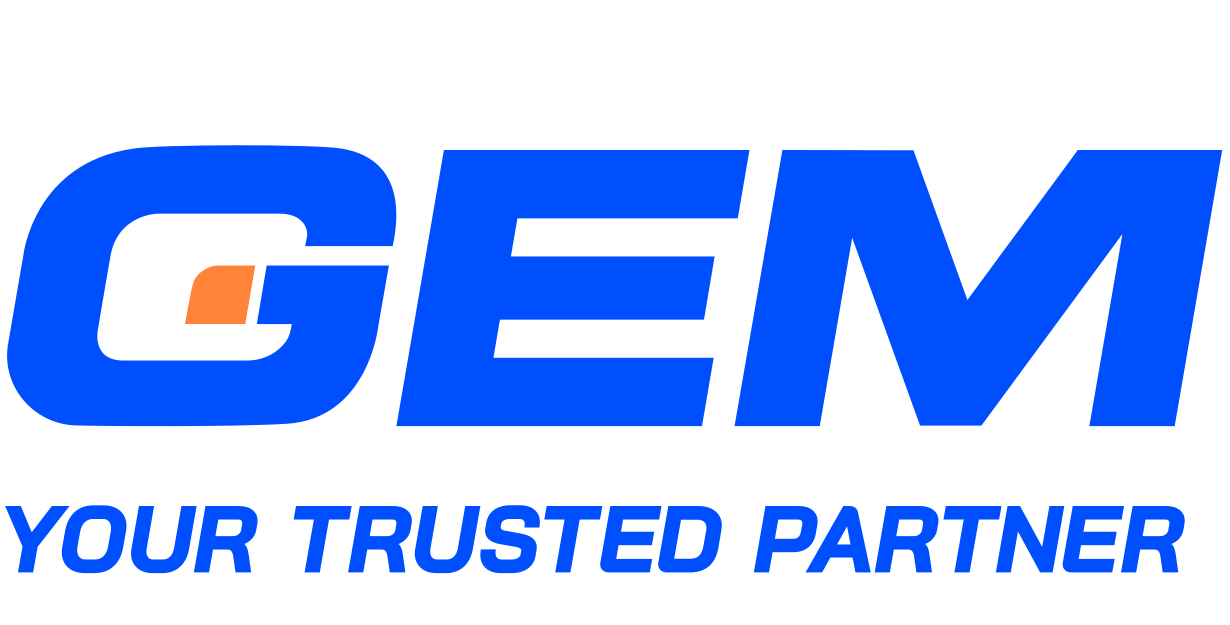Contents
- What are Autonomous Warehouse Robots?
- Types of Autonomous Warehouse Robots
- Drivers Behind the Shift to Robotic Warehousing
- How Autonomous Robots Are Reshaping Logistics and Supply Chains
- Making Warehouse Robotics Work: Implementation Priorities
- Smart Warehouse Technology – What’s Ahead by 2025
- Building Autonomous Warehouse Systems with GEM Corporation
- Make your digital transformationseamless and future-ready
- Conclusion
The global warehouse automation market is projected to hit $35 billion by 2025, growing at over 12% annually. As demand for faster fulfillment, labor efficiency, and real-time visibility increases, Autonomous warehouse robots are becoming a core part of modern supply chain operations. These machines are being deployed at scale to manage inventory, move goods, and optimize picking. This article breaks down the key types of autonomous robots, where they fit in warehouse workflows, and what to expect as robotics technology continues to evolve.
What are Autonomous Warehouse Robots?

Autonomous warehouse robots are mobile machines equipped with sensors and artificial intelligence that perform tasks within a warehouse environment without direct human control. Their core function is to automate material movement, order picking, and inventory handling – activities that traditionally depend on manual labor. These robots are designed to operate in real-time, navigate complex layouts, and interact with both static infrastructure and dynamic human workflows. Depending on their design and role, they may transport goods, retrieve storage bins, or even complete picking tasks entirely on their own.
How They Work
- Navigation:
While older systems like Automated Guided Vehicles (AGVs) rely on fixed tracks, Autonomous Mobile Robots (AMRs) use LiDAR, cameras, and onboard computing to map their surroundings. They generate and adjust routes dynamically, allowing them to avoid obstacles, reroute around congestion, and adapt to real-time changes in the warehouse layout.
- Task Execution:
Robots identify and locate items using AI-powered vision systems. Some are equipped with 3D scanners to analyze object shapes and determine how best to grip them. Once identified, items are picked and placed into bins or totes for further processing, whether for packing or shipping.
- Collaboration:
Many AMRs are designed to work in tandem with human workers. For instance, a robot may bring a shelf or bin to a stationary worker, who handles items that require careful selection or cannot be picked autonomously. This human-robot interaction helps balance automation with flexibility, particularly in warehouses handling a wide range of product types and packaging styles.
Types of Autonomous Warehouse Robots
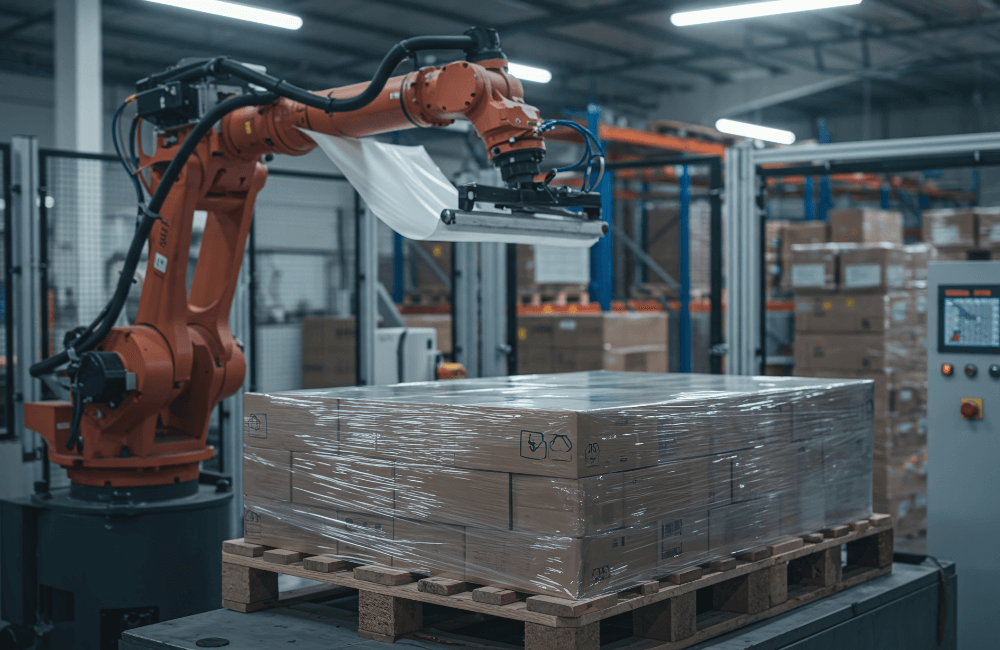
Autonomous robots vary widely in form and function. Grouping them by operational role provides a clearer view of how they contribute to warehouse efficiency.
Robots for Storage and Handling
Automated Storage and Retrieval Systems (ASRS)
These fixed systems use cranes, shuttles, or lifts to retrieve and store goods in high-density racks. ASRS is ideal for maximizing vertical space and minimizing manual handling.
Popular in: Manufacturing, automotive, pharmaceuticals, and large-scale retail distribution centers.
Palletizing and Depalletizing Robots
Deployed at shipping and receiving zones, these robots automate the stacking and unstacking of palletized goods. They reduce physical strain and standardize load handling.
Popular in: Food and beverage, consumer packaged goods (CPG), FMCG logistics, and warehouse hubs handling high-volume pallet flow.
Robots for Internal Transport
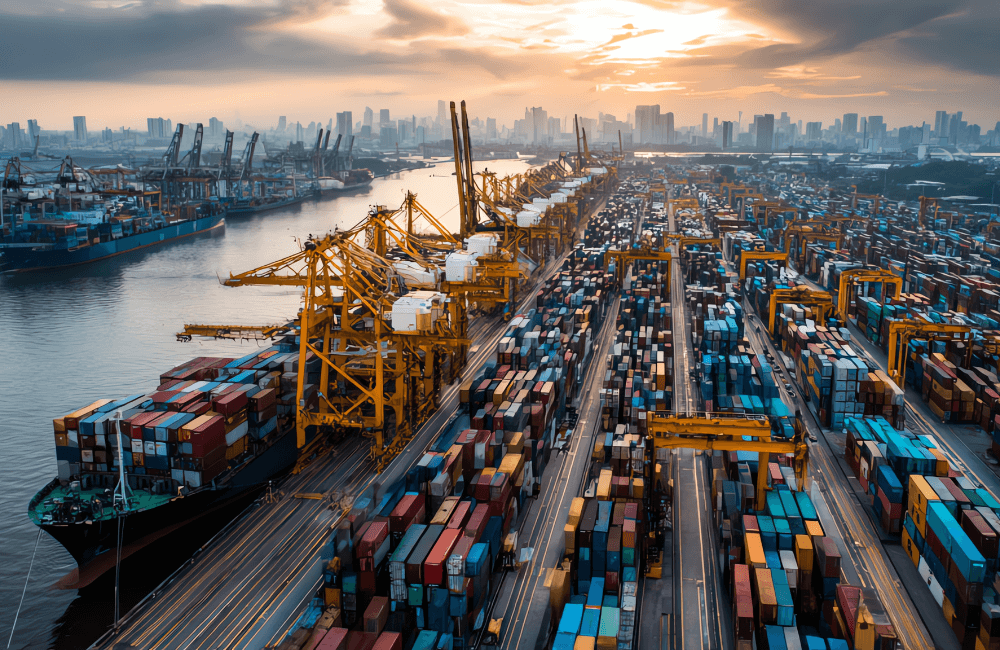
Autonomous Mobile Robots (AMRs)
AMRs transport goods across the warehouse using onboard sensors, cameras, and real-time route mapping. They operate without fixed paths and can adapt to changes in layout or traffic.
Popular in: E-commerce, retail fulfillment, 3PLs, and healthcare logistics, especially where SKU variety and layout complexity are high.
Automated Guided Vehicles (AGVs)
AGVs follow pre-defined paths using embedded wires, magnets, or markers. While less flexible than AMRs, they provide reliable transport for repetitive tasks in stable environments.
Popular in: Automotive assembly plants, electronics manufacturing, and industrial warehouses with consistent layouts.
Robotic Arms with Vision Systems
These systems use AI-based object recognition to pick, place, or sort items. They are often stationed at packing zones or integrated with AMRs for mobile use.
Popular in: Pharma, electronics, and high-precision industries where object handling requires accuracy and repeatability.
Robots for Picking and Fulfillment
Goods-to-Person (GTP) Robots
GTP robots bring shelves or bins to stationary human pickers, reducing travel time and increasing throughput in order picking.
Popular in: E-commerce, apparel, and consumer electronics, especially in high-SKU, high-volume fulfillment centers.
AMRs for Picking
These robots combine item picking with transport, offering an end-to-end solution from shelf to pack-out. They rely on computer vision and AI to identify and retrieve products.
Popular in: Direct-to-consumer (DTC) brands, omnichannel retailers, and high-mix warehouses that prioritize flexibility and speed.
Drivers Behind the Shift to Robotic Warehousing
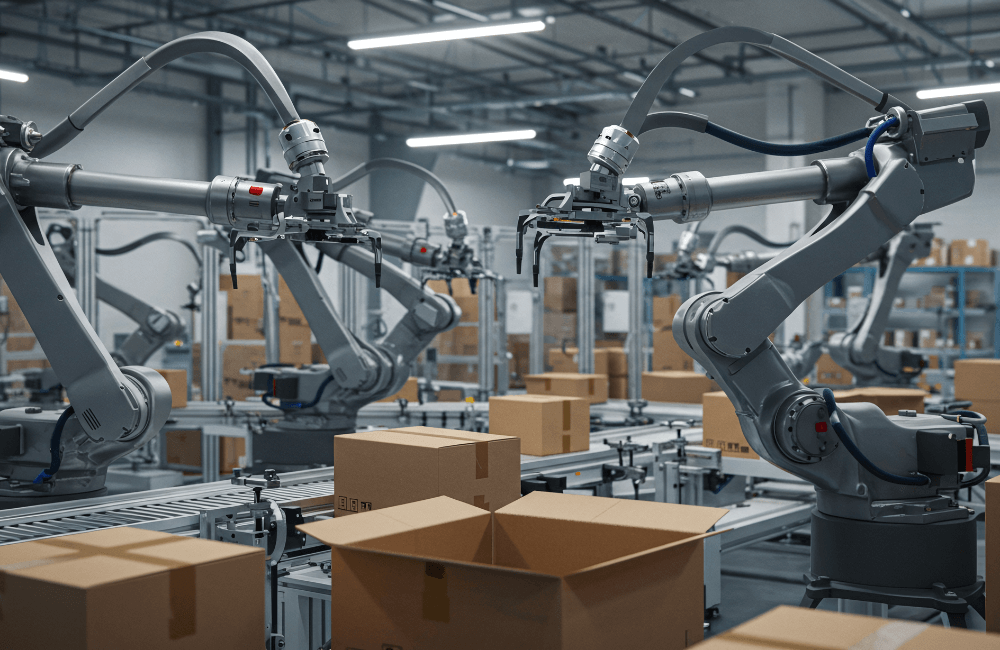
Adoption of autonomous warehouse robots is being driven by a convergence of labor, operational, and market pressures. While the technology has matured, the push to deploy it at scale reflects deeper structural challenges in logistics and fulfillment.
Rising Cost of Manual Labor
Labor shortages and higher wages, particularly in high-turnover roles like picking and packing, are prompting companies to rethink workforce strategies. Robots offer a way to stabilize throughput during peak periods without depending solely on seasonal hiring.
Demand for Faster Fulfillment
Same-day and next-day delivery expectations have compressed fulfillment windows. Autonomous systems support continuous operation and faster cycle times, helping warehouses meet delivery SLAs more reliably.
Growing SKU Complexity
As product catalogs expand, so does the complexity of inventory management. Robots equipped with AI navigation and vision systems can adapt to multi-SKU environments without requiring rigid reprogramming.
Pressure to Reduce Error Rates and Returns
Order inaccuracy remains a major cost driver in fulfillment. Robotic systems improve picking precision and consistency, reducing returns linked to mispicks or incorrect shipments.
Sustainability and Space Optimization
High-density storage systems like ASRS reduce the physical footprint needed for the same inventory volume. Robots also support energy-efficient operations by optimizing movement patterns and reducing idle time.
How Autonomous Robots Are Reshaping Logistics and Supply Chains
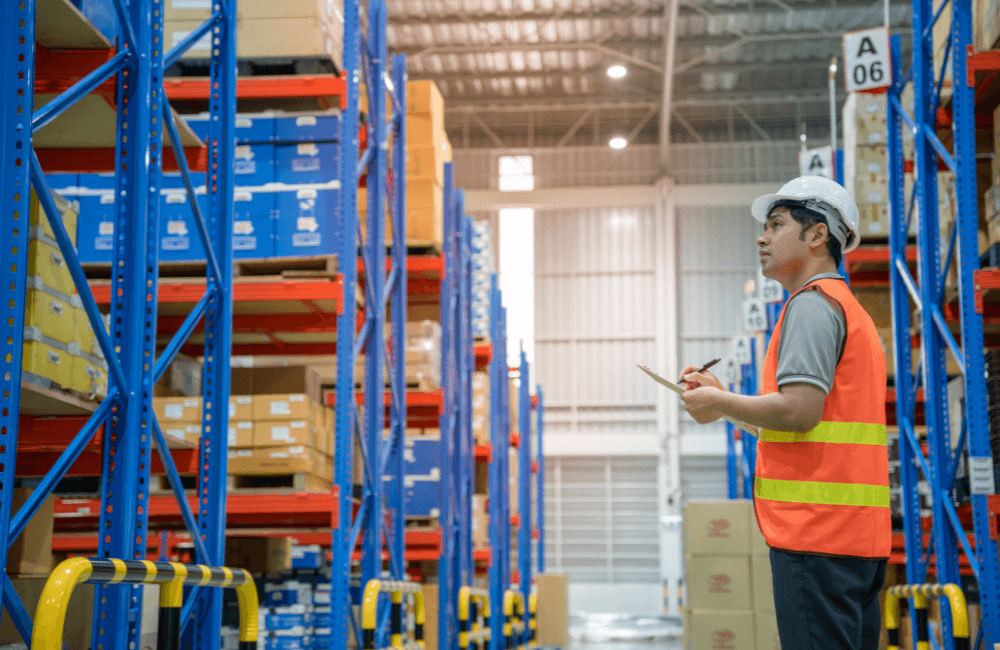
Robotics are reshaping how logistics networks operate, how data flows between systems, and how decisions are made at every layer of the supply chain.
Inventory Accuracy and Visibility
Robots collect and sync real-time data on inventory location, movement, and status. This improves inventory accuracy, supports just-in-time replenishment, and reduces safety stock requirements.
Cross-Docking and Micro-Fulfillment
In high-turnover environments, robots enable rapid sorting and movement of inbound goods directly to outbound staging, bypassing long-term storage. This is especially relevant in urban micro-fulfillment centers where space and time are constrained.
Real-Time Data and Decision-Making
Autonomous systems generate high-resolution operational data that can be fed into analytics engines for performance optimization. This supports more responsive planning and exception handling across the supply chain.
Integration with WMS/ERP Systems
Modern robotic platforms are built to interface with warehouse management systems (WMS), enterprise resource planning (ERP) tools, and transport management systems (TMS), enabling coordinated execution across order, inventory, and shipment workflows.
Making Warehouse Robotics Work: Implementation Priorities

Rolling out robotics in warehouse environments requires a focus on operational fit, not just technical capability. The most effective programs are grounded in clear metrics, cross-functional planning, and scalable architecture. These practices help avoid fragmentation and support long-term performance:
Map Use Cases to Measurable Gains
Start by identifying which workflows are most constrained – travel time, handling errors, or inventory misplacement. Robotics should be applied where it improves throughput or reduces variability, not where it simply replaces human labor.
Integrate with Core Systems Early
Robots perform best when they operate as part of a connected environment. Tightly linking robotics platforms with WMS, inventory systems, and reporting tools helps streamline updates, reduce manual overrides, and make data actionable across functions.
Design for Multi-Modal Environments
Warehouses often require a mix of static systems and mobile robots. Early design should account for how different robot types – AMRs, ASRS, robotic arms, will interact or hand off materials, especially in shared lanes or mixed-task areas.
Build Test-and-Learn Loops
Establish a feedback loop from the beginning. Monitor metrics like order completion time, idle rates, and exception volumes. Use this data to adjust robot task assignments or redeploy units in new zones as demand patterns shift.
Prepare Teams for Operational Change
Introduce robotics as part of a broader process shift, not a standalone upgrade. Equip teams to collaborate with robots, interpret data dashboards, and manage exceptions. This reduces friction and speeds up stabilization.
Smart Warehouse Technology – What’s Ahead by 2025

The next phase of warehouse robotics will focus less on individual machines and more on system-level coordination, adaptability, and operational intelligence. Several trends are shaping that shift:
Human-Robot Interaction at the Task Level
Robots will no longer work in isolation. Expect shared task flows where robots assist human workers directly – bringing items, handling interim tasks, or responding to voice commands. This requires both physical safety standards and workflow compatibility.
Autonomous Fleet Coordination Using AI
AI agents will manage how robots are deployed – assigning tasks in real time based on location, load, and priority. This reduces downtime and helps balance demand across multiple work zones without manual intervention.
Predictive Maintenance Using Sensor Data
As robots generate more performance data, teams will use it to avoid unplanned downtime. Maintenance will shift from scheduled to condition-based, reducing disruptions and extending asset life.
Mixed-Fleet Interoperability
Warehouses will move toward platforms that support different robot brands working together. This unlocks flexibility, allowing businesses to choose the right robot for each task without rebuilding the system stack.
Energy Optimization at Fleet Level
Energy use will be managed more actively through dynamic charging, load balancing, and movement scheduling that aligns with warehouse activity cycles.
Simulation and Planning with Digital Twins
Digital models of warehouse operations will help teams simulate robot behavior, test layout changes, and forecast how process updates affect throughput. This supports faster decision-making without disrupting live operations.
Building Autonomous Warehouse Systems with GEM Corporation

GEM Corporation is a mid-sized IT partner specializing in technology solution development, offshore/onshore services, and practical Data & AI enablement. Since 2014, GEM has delivered secure, high-impact technologies for Fortune 500 enterprises and fast-scaling startups across Japan, Asia-Pacific, and Europe. With a team of 400+ IT professionals, GEM operates with a focus on speed, quality, and reliability, where quality remains the defining principle in every engagement.
In warehouse automation, GEM combines its AI & Automation, Data Services, and Custom Software Development capabilities to build autonomous systems that manage material flow, inventory, and real-time coordination. We apply AI Computer Vision for object recognition and robotic guidance; RPA to automate repetitive warehouse workflows; and NLP for human-robot interfaces. Our Data Platform Transformation and Integration services ensure that robotics systems align with WMS, ERP, and other backend infrastructure to maintain synchronized operations. GEM’s strength lies in building scalable, AI-driven robotics ecosystems tailored to dynamic logistics environments, supported by rigorous testing, system orchestration, and domain-specific engineering.
Make your digital transformation
seamless and future-ready
Accelerate your business growth with zero-disruption modernization services. Maximize the value of your current infrastructure, streamline processes, and cut expenses.
Conclusion
Autonomous Warehouse Robots are reshaping logistics by improving accuracy, shortening fulfillment cycles, and supporting more adaptive operations. From ASRS and AMRs to AI-powered picking systems, these technologies are moving beyond task automation toward integrated, data-driven ecosystems. Their impact extends across inventory management, cross-docking, and real-time decision-making, especially when aligned with warehouse software and analytics. As robotics evolves, the focus shifts to orchestration, interoperability, and collaboration between systems and people.
To explore how GEM can support your warehouse automation strategy, get in touch with our team.
